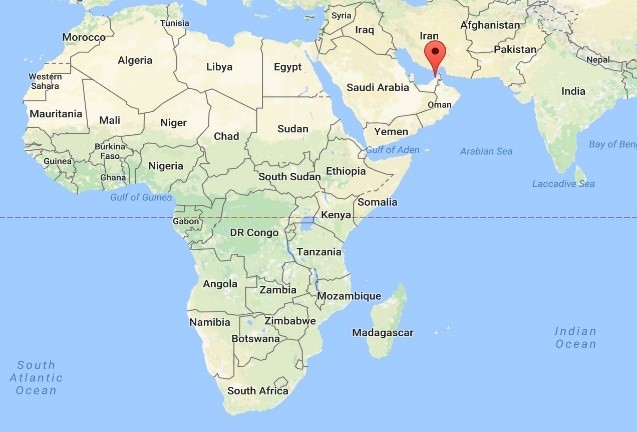GRSV Blog no. 9
Release date: 25/06/2021
SV Raghuram Shetty, Paul Senghor, MVK Sivakumar, Sanath K Reddy, CL Laxmipathi Gowda, V Ramanatha Rao, MJ Vasudeva Rao, and Said Silim
GRSV Consulting Services
The UN Sustainable Development Goal (SDG) 17 specifically addresses the need for global partnerships which utilize and share knowledge, expertise, technology, and resources to support the achievement of the other 16 SDGs, especially in developing countries (https://www.un.org/sustainabledevelopment/). In the past, international cooperation in development focused heavily on multilateral collaboration, involving multilateral institutions and developed and developing countries. Recently, however, there has been increasing emphasis on enhancing South-South cooperation in access to science, technology, and innovation, and to enhance knowledge sharing on mutually agreed terms. South-South cooperation, especially in effective and targeted capacity building and institutional development in the least developed countries, has been given high priority, which calls for more innovative partnerships, with the engagement of both the public and the private sector. We focus here on such collaboration in agricultural research and development between India and Africa.
The FAO, too, is in consonance with that approach, but has called, in particular, for regional cooperation among areas with similar agro-ecologies and production systems, and using strategic engagement with a diverse group of actors (http://www.fao.org/3/i3940e/i3940e.pdf). The FAO has also highlighted that, with some exceptions like Brazil, China, India, Morocco, and Nigeria, many qualified countries in the South are yet to participate actively in South-South cooperation. It has thus called for enhanced cooperation between developing countries and regions in sustainable agricultural development.

Convergence in agricultural development aspirations between India and Sub-Saharan Africa (SSA): Agriculture, particularly smallholder farming in India and SSA, has many common features. Broadly, the agro-climatic base in these two regions is similar. Tropical drylands (arid, semi-arid, and sub-humid) are predominant in both India and SSA. Tropical wetlands, humid subtropics, and montane/highlands are also common in both these regions. Subsistence agriculture is predominant in both India and SSA. Farming systems also have similar crops and livestock components. Further, about 80 percent of the population in dryland areas of SSA and India have similar poverty incidence (earning $2 or less per day), though the childhood malnutrition rate is higher in dryland Asia (42%) than in SSA (27%). However, the socio-economic resource base varies in these two continents. SSA is about seven times larger than India in terms of area, while its demographic dividend, as measured by the proportion of youth to the total population, is similar to India’s. In SSA, labour is a constraint, while in India land is the limiting factor. Indian agriculture now finds itself in the gradual transition towards being more market-oriented, while agriculture in SSA is still largely subsistence-based. The agricultural policy and institutional base in India are also more evolved than they are in many countries of SSA.
India and SSA are faced with similar challenges, and their agricultural development goals revolve around reducing poverty, hunger, malnutrition, and environmental degradation. Both these regions have also realized that partnerships are central to achieve their common goals. Recently, there is an increasing interest in engaging regional and global partnerships to achieve common goals by joining forces to contribute complementary expertise and capacities, particularly in the management of agricultural technology.
Reinvigorate the India-Africa partnership in agricultural research and development: The cooperation between India and Africa in agricultural research and development is not new. For example, as early as in the 1960s, germplasm exchange between the two regions, facilitated by philanthropic organizations like the Rockefeller Foundation, resulted in the development of several high-yielding ragi (finger millet) cultivars, such as Indaf-1, 2, 3, 4, 5, which improved the productivity of ragi cultivation significantly in southern India. Similarly, the highly successful New Rice for Africa (NERICA) varieties, cultivated widely in Africa, were developed by crossing Asian and African cultivated species. Since the 1970s, the International Agricultural Research Centres (CGIAR-IARCs) played a major part in linking India and Africa in the development and exchange of technologies through crop improvement and natural resources management research (https://www.cgiar.org/food-security-impact). For example, several widely grown, high-yielding cultivars of rice, maize, sorghum, millets, groundnut, chickpea, pigeonpea, etc., were developed by utilizing Indian and African germplasm by the IARCs, such as IRRI, ICRISAT, Africa Rice Center, IITA, CIMMYT, etc. The Indian private sector also benefitted from such cooperation, as evidenced by the emergence of several dhal mills in East and Southern Africa and many Indian seed companies joining hands with local seed companies throughout Africa. Similarly, integrated production systems technologies, such as successful holistic watershed management technologies, were also exchanged, thanks to the intervention of the IARCs. Apart from such trilateral cooperation, some cooperation between individual African countries and India has also occurred in training and human resources development (www.ris.org.in/pdf/India_Africa_Partnership_Towards_Sustainable_Development). However, formal and well-structured direct bilateral cooperation between African and Indian institutions in agricultural research and development had been minimal, and it needs to be strengthened.
Realizing the importance of strengthening the India-Africa cooperation, the Delhi Declaration adopted during the India-Africa Forum Summit (2015), attended by 50 Heads of State and Governments representing the continent of Africa, and the Prime Minister of India, under the theme “Partners in Progress: Towards a Dynamic and Transformative Development Agenda,” had identified Agriculture as one of the key areas for cooperation. (www.mea.gov.in/upload/publication docs/25980_declaration.pdf). Focus on technology, trade, and training was highlighted during the summit, to create a new generation of skilled and technology-empowered workers, who could develop a knowledge economy. Recognizing the congruence between the African Union (AU)’s Comprehensive African Agricultural Development Program (CAADP) and India’s agricultural development goals, institutional and capacity building was considered as one of the high priority areas to achieve the shared vision of increasing productivity, conserving land and environment, and ensuring food and nutrition security. The need for a public-private partnership to achieve the common goals was also highlighted in the declaration.
Special emphasis on strengthening the institutional base: As many African countries are still in the process of building their agricultural research and development institutional base, strengthening the capacity of human resources in agricultural technology management is identified as the key area for mutually empowering cooperation. The Indian Council of Agricultural Research (ICAR) is one of the largest National Agricultural Research systems (NARS) in the world, with a vibrant network of more than 100 national institutes and 70 agricultural universities spread across the country, managing research and education in agriculture and allied areas. Having played a major role in the green revolution, ICAR is in a good position to share its experience, and it can be a willing partner in the strengthening of Africa’s agricultural research and education institutions. Similarly, India’s private sector, particularly private seed companies which have played a key role in the advancement of agriculture in India, can share their expertise and experience with African counterparts and gain mutual benefits.
It is now the opportune time for the leadership in agricultural technology management in India and Africa to consider their complementarities (strengths and weaknesses) and identify a few common/tangible themes for partnerships for mutual empowerment and resurgence. For example, Seed Systems and Climate Change can be the two broad focal areas for immediate cooperation. ICAR and the vibrant private seed sector in India can partner with African Union (CAADP), Forum for Agricultural Research in Africa (FARA), regional organizations like the Economic Community of West African States (ECOWAS), West and Central African Council for Agricultural Research and Development (CORAF), Association for Strengthening Agricultural Research in Eastern and Central Africa (ASARECA), Common Market for Eastern and Southern Africa (COMESA), African Seed Trade Association (AFSTA), etc., and selected NARS and seed enterprises, to identify critical areas for strengthening the market-oriented seed value chain in Africa. Similarly, in the area of Climate Change adaptation and mitigation, African institutions such as the AU Ministerial Conference on Meteorology (AMCOMET), the African Center for Meteorological Applications for Development (ACMAD), and the Agrometeorological Technical Center of CILSS (AGRHYMET) could partner with Indian institutions, such as the Indian Meteorological Department (IMD), the Indian Institute of Tropical Meteorology (IITM), ICAR-CRIDA (Central Research Institute for Dryland Agriculture), NICRA (National Innovation in Climate Resilient Agriculture), and others to address weather and climate change issues on a holistic watershed basis for sustainable agricultural development. More such thrust areas, based either on commodities or on production systems, with emphasis on institution building, can also be identified via mutual consultations for future cooperation. For example, addressing food and nutrition security in general, and the value chain development of small grains (millets), pulses, and oil seeds (like sunflower), in particular, can be other focal areas for such partnership.
As African and Indian leaders have already expressed their political will for such partnerships, as evidenced during the India-Africa Forum summit, the next step should be taken by agricultural technology management leaders of both the regions, to develop a concrete plan of action. The action plan should take into consideration the lessons learnt from past international cooperation efforts, and also build on the success stories noted in some areas. During the planning stage, a few key development partners, such as the African Development Bank (AFDB), the World Bank, the United States Agency for International Development (USAID), the Bill and Melinda Gates Foundation, and the Syngenta Foundation, may also be associated. The technical expertise of those who have had past experience of working in both the regions can also be utilized for developing robust action plans.
In addition to their geographic, historic, cultural, and trade links, Africa and India— representing about one-third of humanity—have realized that there is an increasing convergence of their interests, values, and development aspirations. During these challenging and changing times, it is doubly important that Africa and India strengthen their cooperation and partnerships in access to agricultural innovations and technology and enhance knowledge sharing on mutually agreed terms. Effective and targeted institutional capacity building, aimed at supporting agricultural research and development, should be reinvigorated to achieve the shared vision of sustainable growth and prosperity in these two growth poles of the world. As the former Ghanaian President, John Kufuor, famously said, “by marrying African resources and Indian expertise, anything is possible.” India and Africa can build long-standing cooperation in agricultural technology management with mutual empowerment, and thus demonstrate the potential of South-South partnership in agricultural research and development to the world community.
